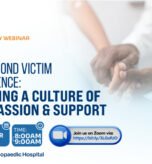Look-alike sound-alike (LASA) drugs are medications that have similar names, spelling, or packaging, increasing the risk of confusion and medication errors. This can happen between different medications, brand-name and generic versions, or generic-generic versions.
Insulin and Isoprinosine. Adrenaline and Atropine.
In high-pressure healthcare settings, sound-alike, look-alike medications (LASAs) are not just a nuisance—they’re a quiet threat to patient safety.
Despite best intentions, medication mix-ups continue to harm patients globally, often with devastating consequences. According to the WHO, medication errors account for over a million preventable deaths and injuries annually, and LASA confusion remains a key contributor.
Why do these errors persist?
Because urgency often outruns caution:
A quick grab from a similar-looking vial during a code blue.
A name misheard in a noisy ward.
Medications stored alphabetically, side-by-side, with nearly identical packaging.
In the moment, these split-second decisions can cost lives.
What can we do?
📌 A label alone isn’t enough. We need a multi-layered defense against these errors.
✔ Storage strategies: Separate look-alike/sound-alike medications, especially high-alert drugs.
✔ Labeling techniques: Use Tall-Man lettering (e.g., DOBUTamine vs. DOPamine) and bold warnings.
✔ Barcode scanning and verification: Make double-checks the norm, not the exception.
✔ Staff education: Ongoing training to reinforce awareness of LASAs.
✔ Reporting culture: Near-misses should be reported and reviewed—not punished.
It’s time we stop treating LASA issues as inevitable and start addressing them as predictable and preventable system failures.
Let’s ask ourselves:
Is my facility actively identifying and managing LASA risks?
Are we focusing not just on individual vigilance, but on system-level safeguards?





